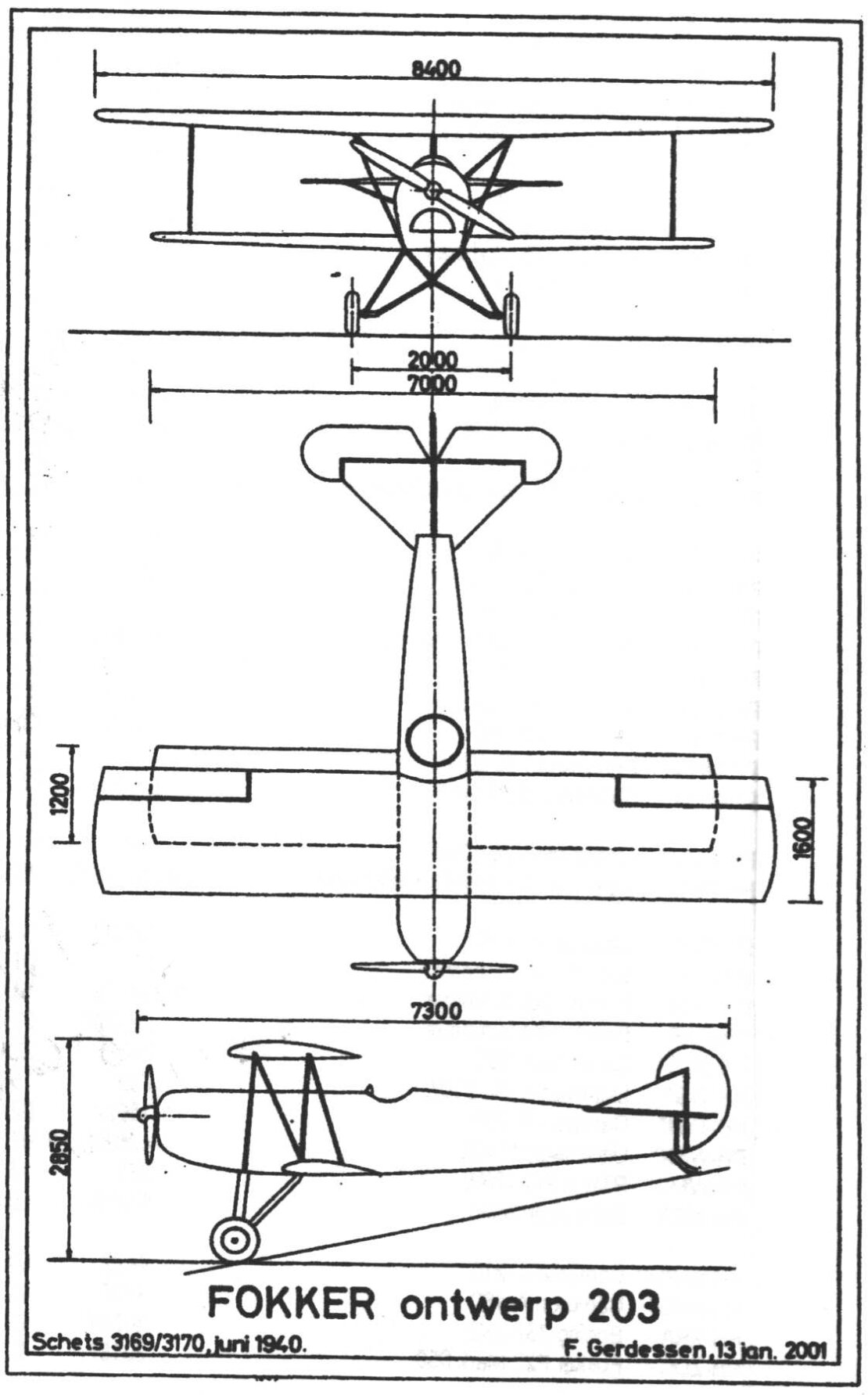List of V-Types (under construction)
January 1918 Fighter trials
These were the contestors at the first D-type competition of Januari 1918
Albatros D.Va
Aviatik D.III
Fokker V.11
Fokker V.13/I
Fokker V.13/II
Fokker V.17
Fokker V.18
Fokker Dr.I
Pfalz D.IIIa
Pfalz D.VI
Pfalz D.VII
Roland D.VI
Roland D.IX
Rumpler D
Schutte-Lanz D.III
Siemens-Schuckert D.III
Production differences
Probably because drawings from the Fokker factory were not available, and the Albatros factories had to work with a pattern aircraft, differences existed between the D.VII’s build by Fokker, Albatros and Ostdeutsche Albatros Werke. From which factory a D.VII originates, can be determined by the serial, or by the type of engine cowling.
Basically, there are four different cowling layouts of D.VII’s. First, there’s the original V.11 and early Fokker built production aircraft, with the twin exhaust pipes on the right side of the 160 hp Mercedes engine. This type of cowling can also be seen on D.VII(Alb.) 527/18, the first Albatros production aircraft. Later Fokker D.VII(F) aircraft had a different exhaust pipe for the 175 hp Mercedes or 185 hp BMW engine, and the cowling had more cooling louvres.
D.VII’s built by Albatros had also more cooling louvres, in a different layout.
The O.A.W. built D.VII’s can be easily identified, since they have cowlings with 20 round shaped cooling openings on both sides. Some sources state that only O.A.W. painted the cowlings in a lozenge camouflage pattern.
Lozenge camouflage pattern
During World War I, the Germans were looking for a way to effectively camouflage their aircraft. This resulted in the so called Lozenge pattern. This was made up of irregular painted polygons. Because this painting was very time consuming, and the paint added considerably to the weight of the aircraft, it was decided to print the pattern on the fabric. This pre-printed fabric was used from 1916 onwards, in various forms and colours.
There where two types: four and five colour lozenge fabric, the latter one being the final development. Besides this, two colour patterns were used :
a dark version for the upper surfaces

and a light version for the lower surfaces

This fabric was applied to all surfaces that had to be covered, sometimes straight, and sometimes diagonal from the wings’ leading to its trailing edge.
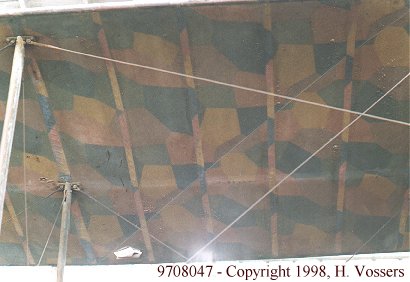
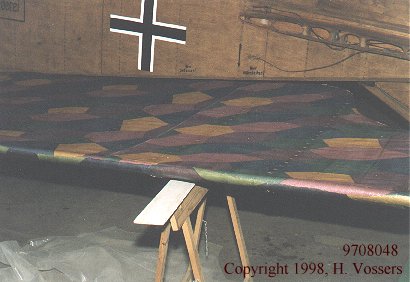
Production lists
In the various publications on the Fokker D.VII, several different lists have appeared with ‘known’ German serial numbers for D.VII’s. I have three such lists, one from “Windsock Datafile Nr. 9”, “Pierwsze Samoloty Mysliwskie lotnica polskiego”, and one from an unidentified (by me) article from Aviaton News. From these lists, I have compiled the next one :
WINDSOCK NR. 9 | PIERWSZE etc. | AVIATION NEWS | PRODUCED BY |
227-526 | 227-524 | 230-523 | Fokker |
527-926 | 527-874 | 525-874 | Albatros |
2000-2199 | 2000-2199 | 2000-2074 | O.A.W. |
2550-599 | O.A.W | ||
2759-2799 | 2750-2799 | Albatros | |
4000-4199 | 4000-4199 | 4000-4199 | O.A.W. |
4250-4449 | 4250-4449 | 4250-4449 | Fokker |
4450-4649 | 4450-4649 | 4450-4649 | O.A.W. |
5050-5149 | 5050-5149 | 5050-5149 | Fokker |
5200-5599 | 5200-5549 | 5200-5549 | Albatros |
6300-6649 | 6300-6649 | 6300-6399 | O.A.W. |
6500-6599 | O.A.W. | ||
6650-6899 | 6650-6899 | 6650-6899 | Albatros |
7604-7805 | 7604-7803 | 7600-7805 | Fokker |
8300-8649 | 8300-8649 | 8300-8600 | O.A.W. |
10050-10100 | 10047-????? | Albatros | |
10347-10399 | 10346-10445 | 10300-10499 | Fokker |
Manufacturing plates
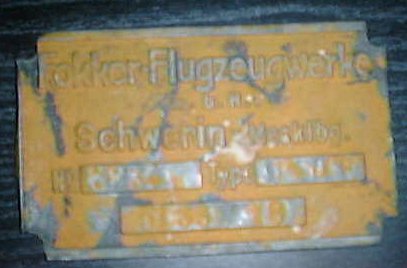
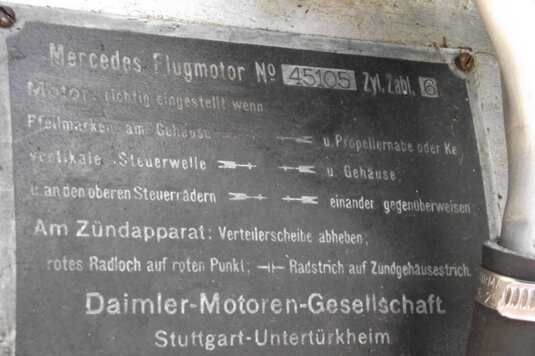
Fokker 'Ontwerp 203'
Little is known about the fact that in 1940 a new D.VII design was made. The story about this Fokker ‘Ontwerp’ (Design) 203 can be read in ‘Luchtvaartkennis’ nr. 3/2001, written by F. Gerdessen. I have made translation from this article.
A D.VII for Hermann Göring in 1940
Fokker Ontwerp 203 by Frits Gerdessen
Who looks at the drawings of Fokker ‘Ontwerp’ 203, may think: this looks like a D.VII. That is a right conclusion.
Right after the occupation of the Netherlands, Friedrich Wilhelm Seekatz, manager at Fokker, wanted to give a present to Hermann Göring (which he knew from World War 1): a D.VII.
However, that D.VII had to be build. Some designers worked on the project from May to July 1940. At the 30th July the project was cancelled. It was not possible to build an original D.VII. The originally used engines (160 hp Mercedes and 180 hp BMW) where not available anymore. That is why a 240 hp Argus AS 10 E engine was projected. This made for a different nose design.
The profile of the wings was changed. Originally this had a flat underside, but now it was a little curved. The incline of the ailerons was dropped. At first a tailwheel was drawn (sketch 3169), but the next drawing (sketch 3170) shows a tail skid. The landing gear was in design similar to that of the D.16, D.17 and C.10, without a horizontal axle.
A special problem was the design of the fuselage. In World War 1, when Göring flew the D.VII, he was a slim young man. His shape had changed however, so that it was impossible for him to fit in a D.VII. A wider fuselage had to be designed. It is remarkable that this is not shown at the performance figures. 90 kg for a pilot with parachute must have been too little.
After ‘Ontwerp” 203 came 204, also a single engined aircraft. Probably a more modern design was considered. The 204 (sketch 3343) is smaller than the 203, with tapered wings. Technical specifications for the 204 are not known. Measurements were: span 8,00 m, length 7,10 m, height 2,60 m.
Technical specifications for ‘Ontwerp 203’
Span 8,40 m
Length 7,30 m
Height 2,85 m
Wing 21,80 m2
Empty weight 735 kg
Pilot + parachute 90 kg
Gas + oil 125 kg
Total weight 950 kg
Maximum speed 220 km/h
Cruise speed 170 km/h
Endurance 510 km
Climb to 1000 m 3,2 min
Climb to 2000 m 7,2 min
Climb to 3000 m 12,2 min
Climb to 4000 m 20 min
Ceiling 5200 m
Maximum ceiling 5700 m
